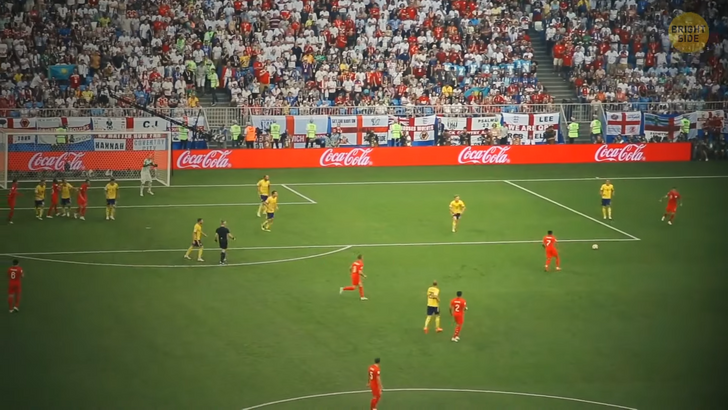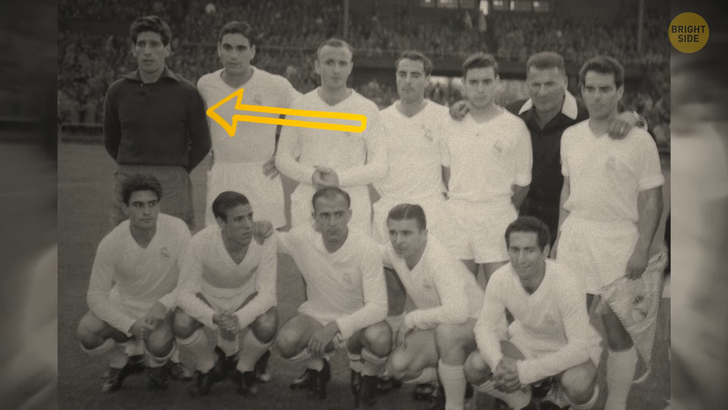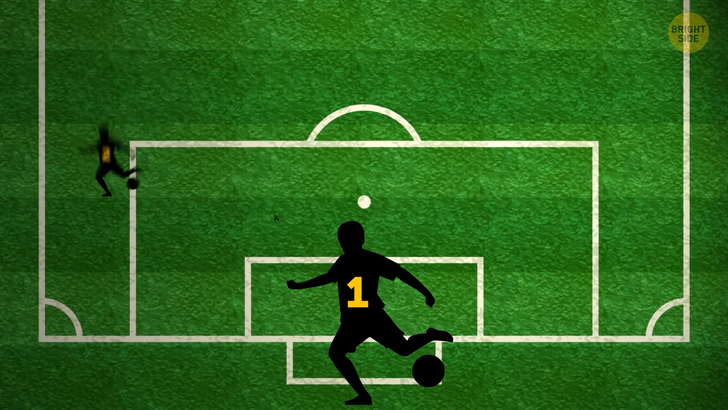13 Family Conflicts That Sound Straight Out of a Soap Opera


And there’s the kick-off. Imagine watching your favorite team square up with its rivals. If you’re in the stands cheering them on, then it’ll be even better to see them run up and down a cool-looking patch of green grass. That’s why most pitches have different grass patches for your entertainment.
The only player on the pitch who’s allowed to touch the ball is the goalkeeper, and you can easily identify them by the different colors of their jerseys. They were asked to wear different colors so that they can pick them out from the crowd. This tradition started more than 100 years ago when jerseys looked slightly different and the pace of the game wasn’t as fast as today.

The one thing that remained constant is the size of the ball. For 120 years, the football shape and size have not been changed seeing as this will affect the athlete’s overall performance. If you’re about to shoot the ball past the goalie, then you would know the exact force, pressure, and spot where to kick it. Athletes train for this ball specifically. Changing it would mean training athletes to figure out a new way of doing things. I mean there won’t be much change if the ball were only slightly bigger or smaller, but this is the sweet spot for the ideal football size. Oh, almost forgot. If you’re a U.S. viewer, you of course know, that when I say “football”, you think “soccer”.
Ever wondered why they wore jersey numbers? Just like how the goalie can be identified from the crowd, a jersey number identifies a player on the pitch in a sea of other players. And each number represents something. When a player is signed to a club, they have to be registered to a jersey number. While the player can sometimes pick what they want, some jersey numbers are reserved for the specific position they’re playing in.
A striker cannot wear the number 1 jersey — that number is reserved for goalkeepers only. A striker is a player whose job is to score goals and has a great awareness inside the opposition’s penalty box. They get the number 9 jersey. In consecutive order, the numbers 2 to 5 are for defenders who can play in various positions. Numbers 6, 8, and 10 are midfielders who play in the middle of the pitch. In general, they control the game and are the middlemen between defense and attack. You would find them all over the pitch.

Number 7 and 11 are wingers; they are the support players for the strikers and also contribute to goals. They’re usually fast and tricky with the ball. Traditionally, this is what the numbers mean but nowadays, clubs don’t usually stick to it. Some midfielders can have a number 7 and some defenders can wear a number 6. These days, numbers 7 and 10 are deemed as the most popular jerseys for people to buy and put their names on the back.
Some clubs have actually retired certain jersey numbers which means after an incident with a player who wore the jersey, the club will decide to not let any future player wear the jersey number. Some football clubs also have a reputation for jinxed jersey numbers. This usually happens when a player wears a number 9 jersey and has big shoes to fill after the player that wore it previously scored plenty of goals. The new player might be a perfect striker, but there’s something about wearing that new jersey number that makes them get the yips; or in other words, lose their focus.
It might be easy for some players to lose focus especially as they grow older. A football player will start to come down from their peak in their mid-thirties. It might not seem that old for other professions, but in sports, particularly in football, 35 years old is considered old and close to retirement. Wow. Except if you’re Kazuyoshi Miura who plays for Yokohama FC. He’s considered to be the oldest professional Japanese football player currently on the pitch. He’s 53 years old and plays as a forward in attack. So what? That makes him kind of a geezer in football terms.

Football is for all ages and is one of the oldest sports known to us. Even though it’s most famously associated with Brazil or England, there is evidence that dates back more than 2,000 years ago. This evidence suggests China was home to the original footballers. But England took the sport, polished it, and made it into the powerhouse sport it is today. They created some rules including forbidding touching the ball unless you were the goalkeeper and domesticating it to limit the violence. Hmm.
It’s no surprise that the oldest football club in the world is in England. Sheffield FC was founded in October 1857 in a city in South Yorkshire. That means the club existed before the tragic accident of the Titanic and before the Eiffel Tower solidified itself as a landmark in Paris. It’s no wonder football is the most popular sport in the world. The World Cup racks in billions of views with the whole world tuning in. The road for any country to qualify is tedious and long.
Every country in the world plays. That’s right, your country is technically playing in the World Cup, but it all starts in the qualifying stages which happens over years. Every country plays in the qualifying stages except a few selected countries and territories. They don’t get all the attention and are slowly eliminated until you have the strongest teams from each continent. Fun fact, Greenland cannot host any official football games because of the weather; it’s just too cold for grass to grow which is a requirement from FIFA.

Qatar will be the first Middle Eastern nation to host the World Cup, and it will be the first one to be played during the winter season. The simple reason is that summers in Qatar are just way too hot for attendants and athletes. A regular match is 90 minutes, 45 played in each half with a 15-minute halftime break. During August, teams have a long water break around the 30-minute mark. Summers in Qatar can reach more than 120 °F and humidity can make it even more unbearable. But the winters are tolerable. This will also be a unique World Cup considering stadiums will have full air conditioning so that no one feels hot in any way.
Terrains and climates can sometimes be to a country’s advantage. Brazil and Argentina are without a doubt the strongest teams in South America. Of course, you have Chile and Uruguay who have won some trophies in recent years, but it’s always down to the 2 biggest rivals. However, every country shudders when they visit one of the highest elevated countries in the world — Bolivia. Brazil has lost some games there even with a star-studded team worthy of crushing even the mightiest of teams. But with such high elevation, oxygen levels are lower which makes it difficult for Brazilians or any other foreign team to play. Bolivians are used to it and other teams just have to be really well-prepared for the game. Or carry their own oxygen. Oh, you can’t do that. Okay, never mind.

Brazil has had some of the best players in the world, and it’s no surprise that the most expensive player in the world is Neymar. This Brazilian football wizard was acquired by PSG or Paris Saint-Germain [Pa-ree sen zher-MAN] from FC Barcelona in 2017 for an impressive $264 million and no player has since then broken this record or has ever been so close to reaching this value. And guess what? They gave him the number 10 jersey.
Brazilians are known for their flair with the ball and the impressive dribbling skills they bring to the pitch. And it’s also no surprise that one of the fastest goals ever scored in a professional football match was a Brazilian. Ricardo Olivera scored a goal in just 2.8 seconds back in 1998. If you were watching this game live, then chances are you’d miss it considering that you’re still adjusting yourself and probably missed the goal from blinking. I know one thing for sure — I’m gonna keep an eye out for Brazil this World Cup.











